Rights Breached, Responsibilities Neglected: How the My Lai Massacre Exposed the Ethical Issues of the Vietnam War
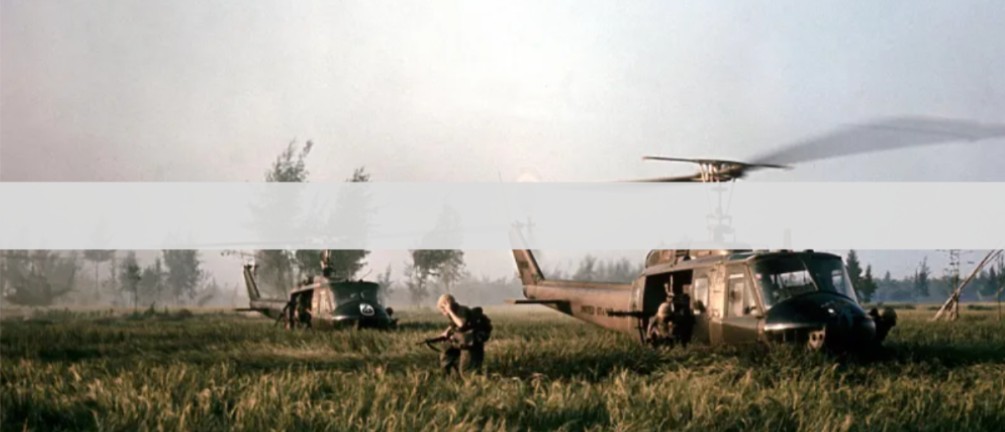
“The American helicopters that brought Company C soldiers to My Lai for the assault.” Ronald L. Haeberle / The LIFE Images Collection / Getty Images
The Massacre
“Shortly after 7 a.m. on March 16, 1968, the first platoon of Charlie Company, one of three U.S. infantry companies assigned to Task Force Barker, began landing just outside a small village in central Vietnam, intent on doing exactly what Thompson and I and most other Americans didn’t think American soldiers would do: massacre an entire community of unarmed, unresisting civilians.”
-Ronald Ridenhour, whistleblower of the My Lai Massacre, in his New York Times Article, “PERSPECTIVE ON MY LAI”, March 16, 1993
Timeline Of The Massacre
March 16 1968, 7:22 AM → Nine helicopters carrying Charlie Company lifted off to My Lai.
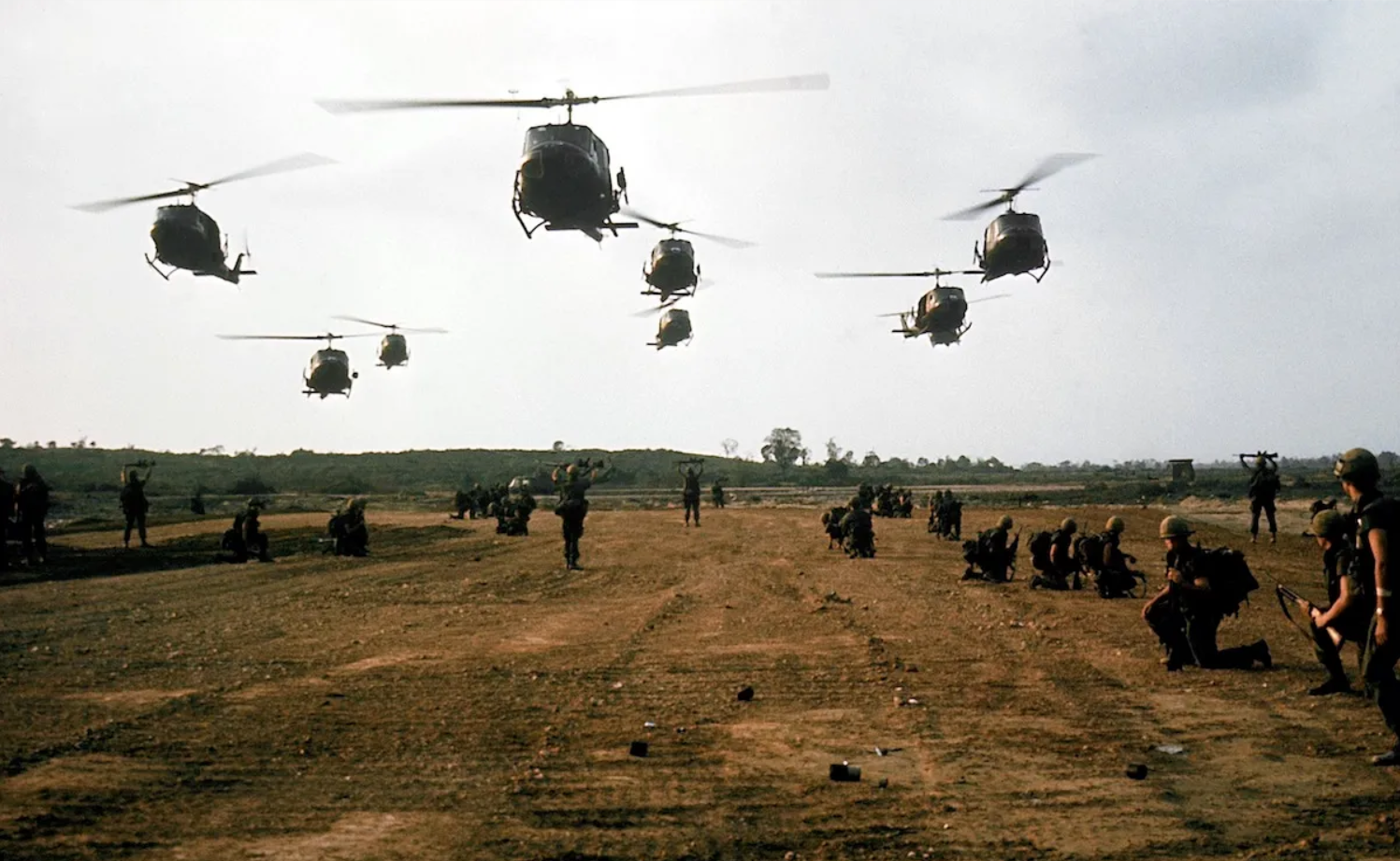
“American military helicopters in flight during the My Lai massacre on Mar. 16, 1968 in My Lai, South Vietnam” Ronald L. Haeberle / The LIFE Images Collection / Gettym Images
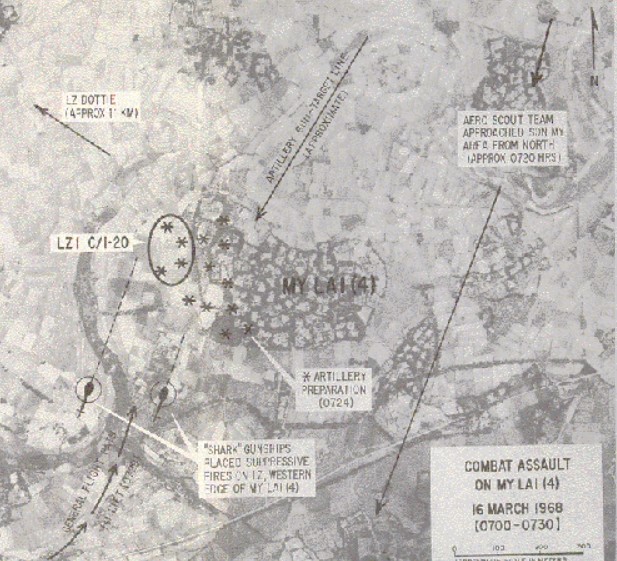
“AERIAL MAP OF 3/16/68 ASSAULT” The Peers Commission
7:30 AM → Gunships raked the landing zone with machine-gun fire, sending villagers diving for cover.
"Four Hours in MY LAI, Anatomy of a Massacre" Youtube / Yorkshire Television
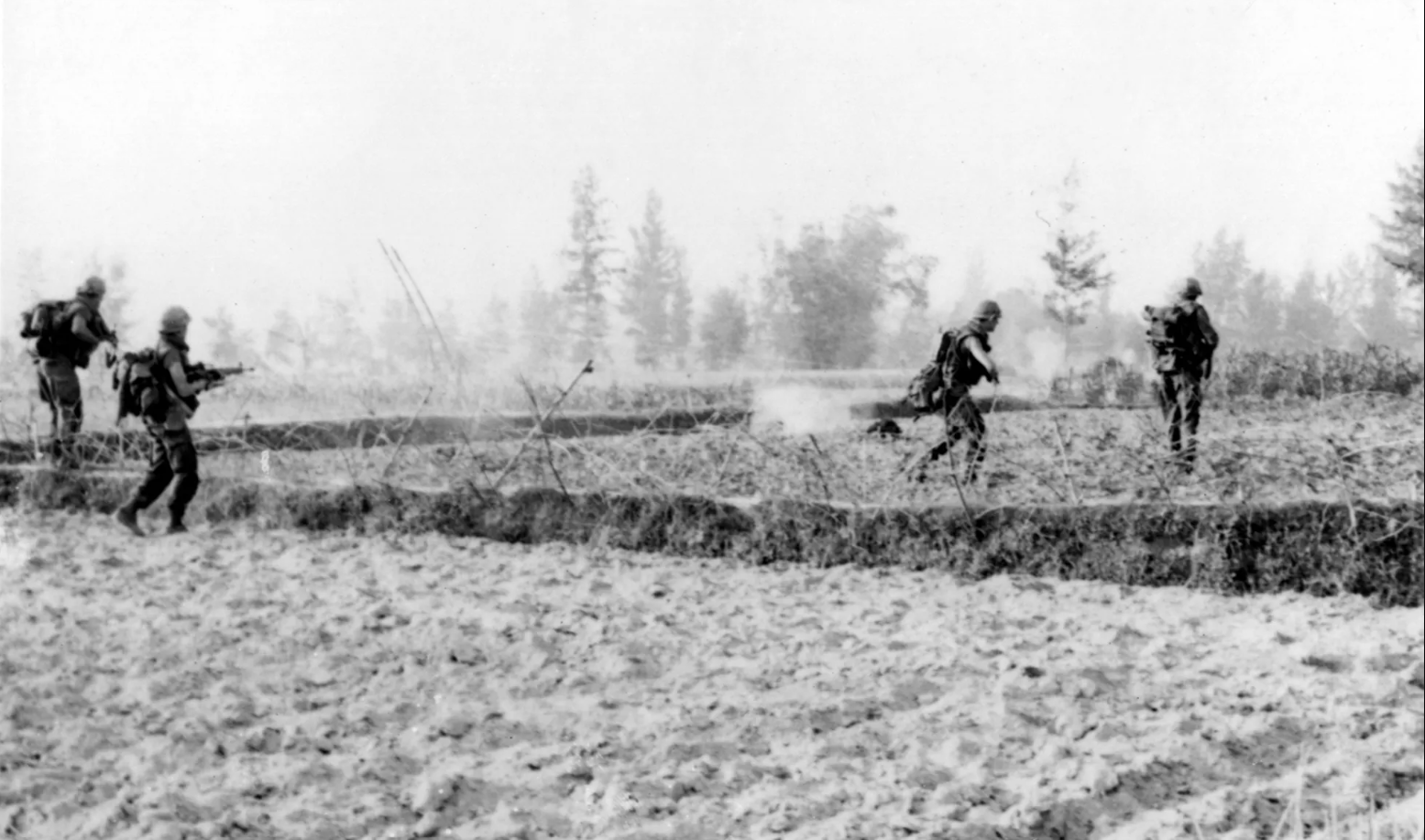
“GIs advance from their landing zone towards My Lai." Ronald Haeberle/U.S. Army photo
"There were some South Vietnamese people, maybe 15 of them, women and children included; walking on a dirt road maybe 100 yards away. All of a sudden the GIs just opened up with M16's. Besides the M16 fire, they were shooting at the people with M79 grenade launchers. I couldn't believe what I was seeing.”
-Ronald Haeberle, Army Photographer for Charlie Company
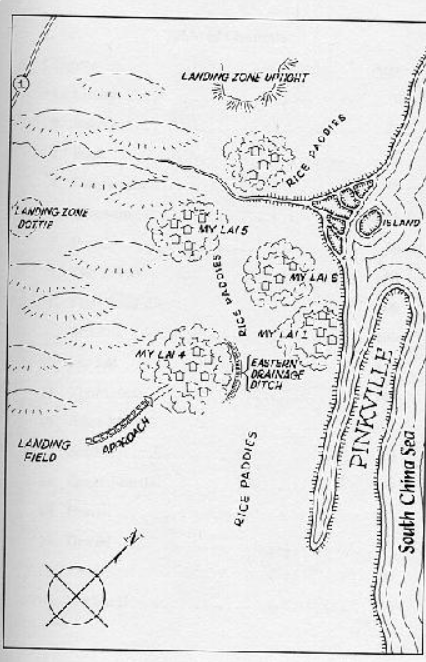
"MAP OF MY LAI \ PINKVILLE, QUANG NGAI PROVINCE" Famous Trials
7:50 AM → The four platoons eagerly inserted themselves into the village. Despite expecting heavy resistance, the soldiers encountered none.
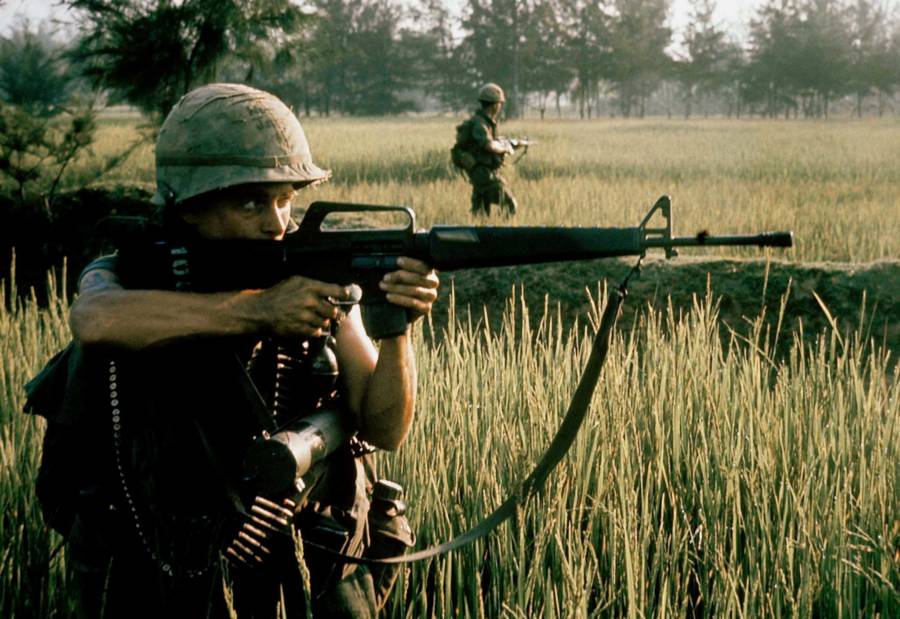
“A soldier opens fire on a group of fleeing civilians. Son My, South Vietnam. March 16, 1968.” My Lai Collection / The Vietnam Center and Archive / Texas Tech University
“There were no mines or booby traps. There was no need to call for mortar fire from the weapons platoon or any fires from artillery units in direct support. The soldiers found no VC. The only people that Calley’s platoon encountered were unarmed, unresisting, and frightened elderly men, women, children, and babies.”
-Fred L. Borch, “A Look at the My Lai Incident Fifty Years Later”, The Journal of Army History, Regimental Historian and Archivist for The Judge Advocate General’s Corps.
"We met no resistance and I only saw three captured weapons. We had no casualties. It was just like any other Vietnamese village-old Papa-Sans, women and kids. As a matter of fact, I don't remember seeing one military-age male in the entire place, dead or alive."
-Sergeant Michael Bernhardt, soldier of Charlie Company
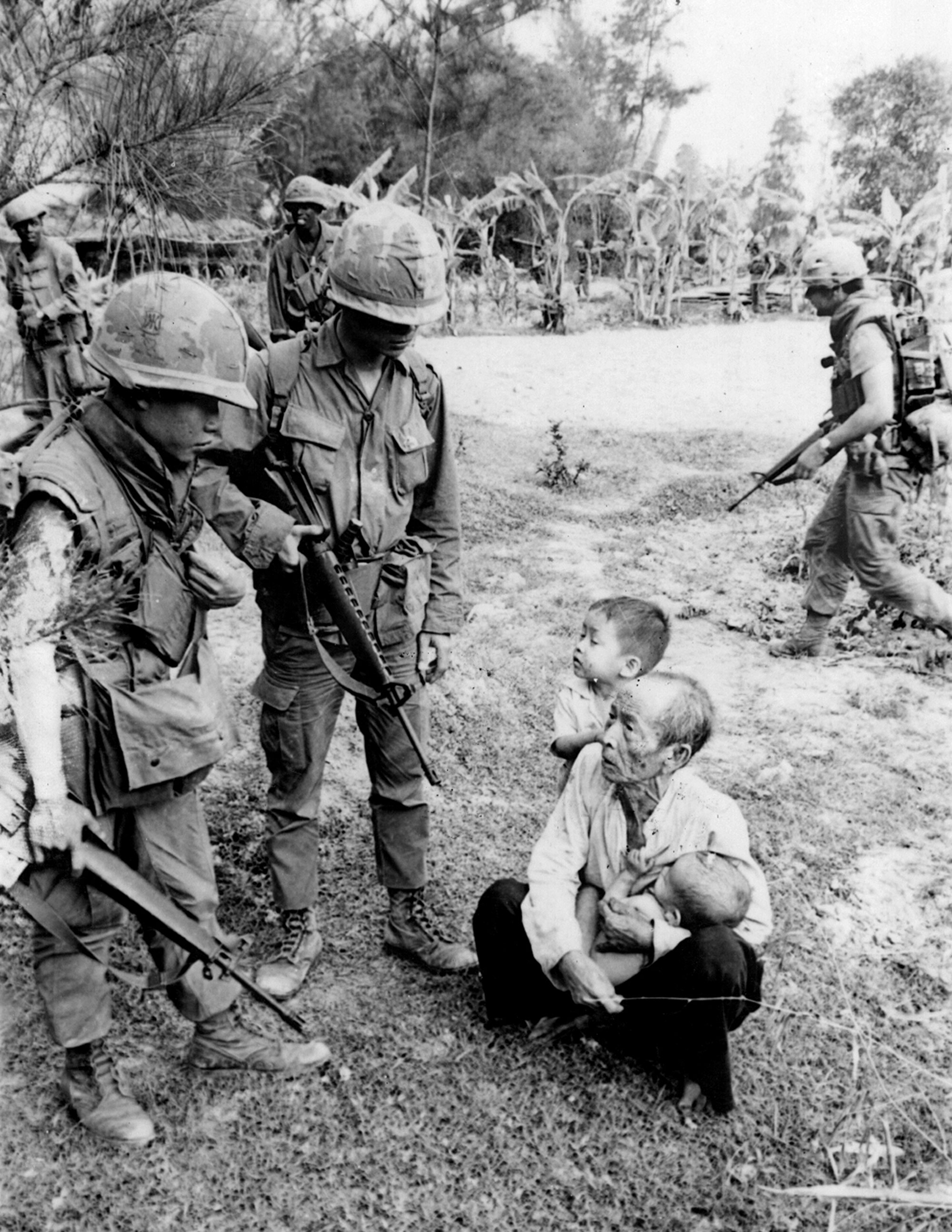
“A father pleads for his son's life. Son My, South Vietnam. March 16, 1968.” My Lai Massacre Museum / The Peers Report
Instead, villagers were peacefully eating breakfast. Even with the stark discontinuity between their orders and reality, soldiers continued to kill.
“As soon as they started opening up, it hit me that it was insanity. I walked to the rear. Pandemonium broke loose. It sounded insane — machine guns, grenades. One of the guys walked back, and I remember him saying, ‘We got sixty women, kids, and some old men.’”
-Terry Reid, soldier of Charlie Company
“He aimed into our meal and shot. People collapsed one by one.”
-Tran Nam, a 6 year old My Lai resident and survivor of the massacre
7:50-9:00 AM → Soldiers swept the village and callously gunned down civilians. Huts were set ablaze as villagers begged for mercy. All crops were destroyed; all livestock were slaughtered.
"They just marched through shooting everybody. Seems like no one said anything. They just started pulling people out and shooting them."
-Michael Terry, soldier of Charlie Company's 2nd Platoon
“We went through the village. We didn’t see any VC (Viet Cong). People came out of their hootches(huts) and the guys shot them down and then burned the hootches, or burned the hootches and then shot the people when they came out... It went on like this all day. Some of the guys seemed to be having a lot of fun doing it.”
-Herbert Carter, soldier of Charlie Company's 1st Platoon
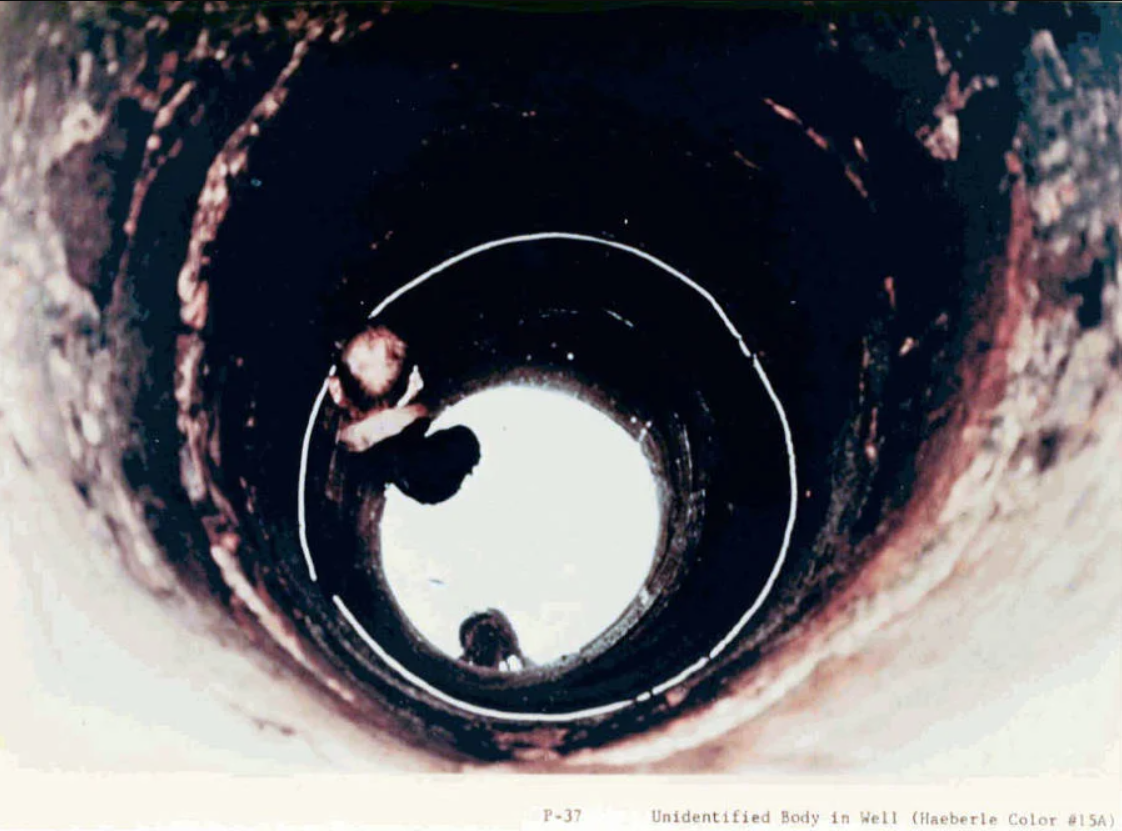
“A dead body lies at the bottom of a well. Son My, South Vietnam." Wikimedia Commons
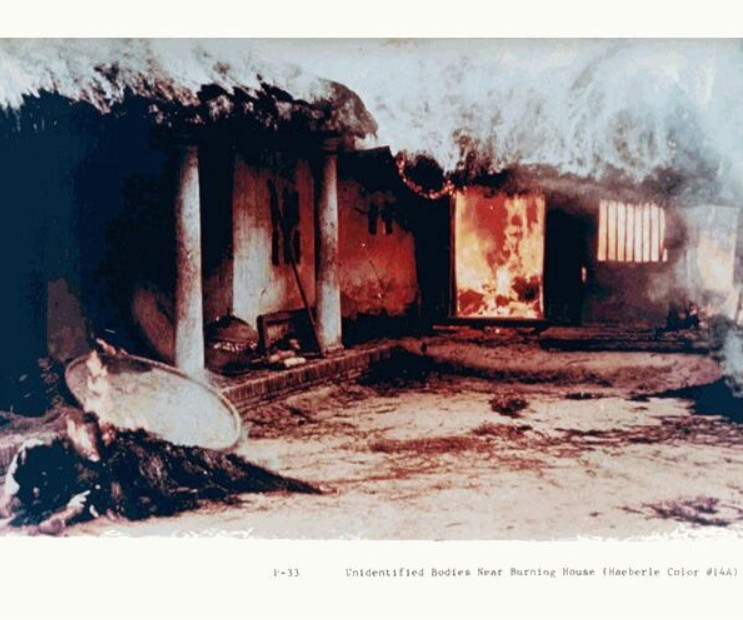
“Unidentified Bodies Near Burning House" Wikimedia Commons / Ronald Haeberle
“It was so brutal. They destroyed everything. They burned the houses, the banana trees, the animals.”
-Truong Thi Son, 67, My Lai resident and survivor of the massacre
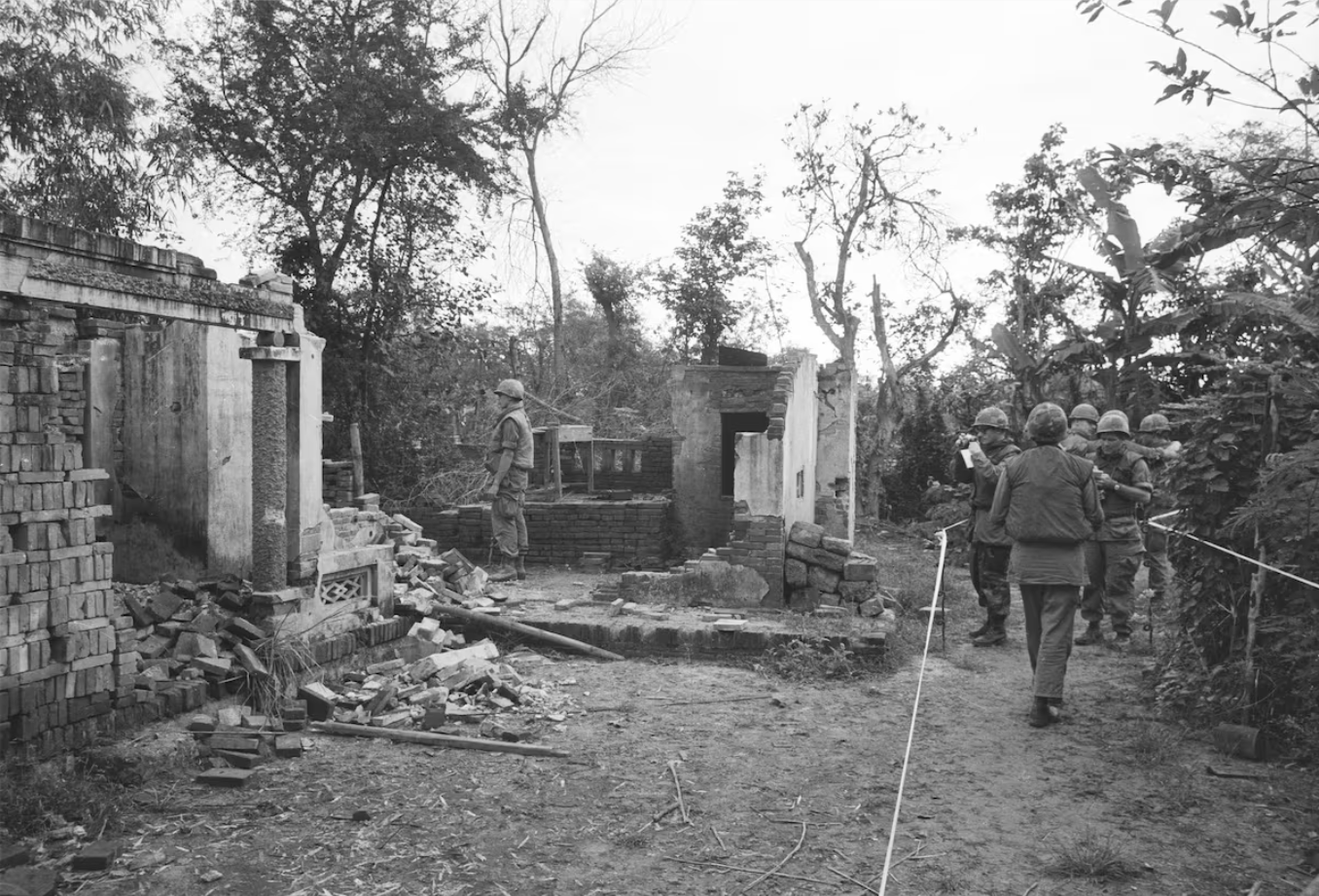
“American soldiers look over the remains of a home in My Lai, South Vietnam, in this Jan. 8, 1970 file photo, two years after the massacre.” ASSOCIATED PRESS
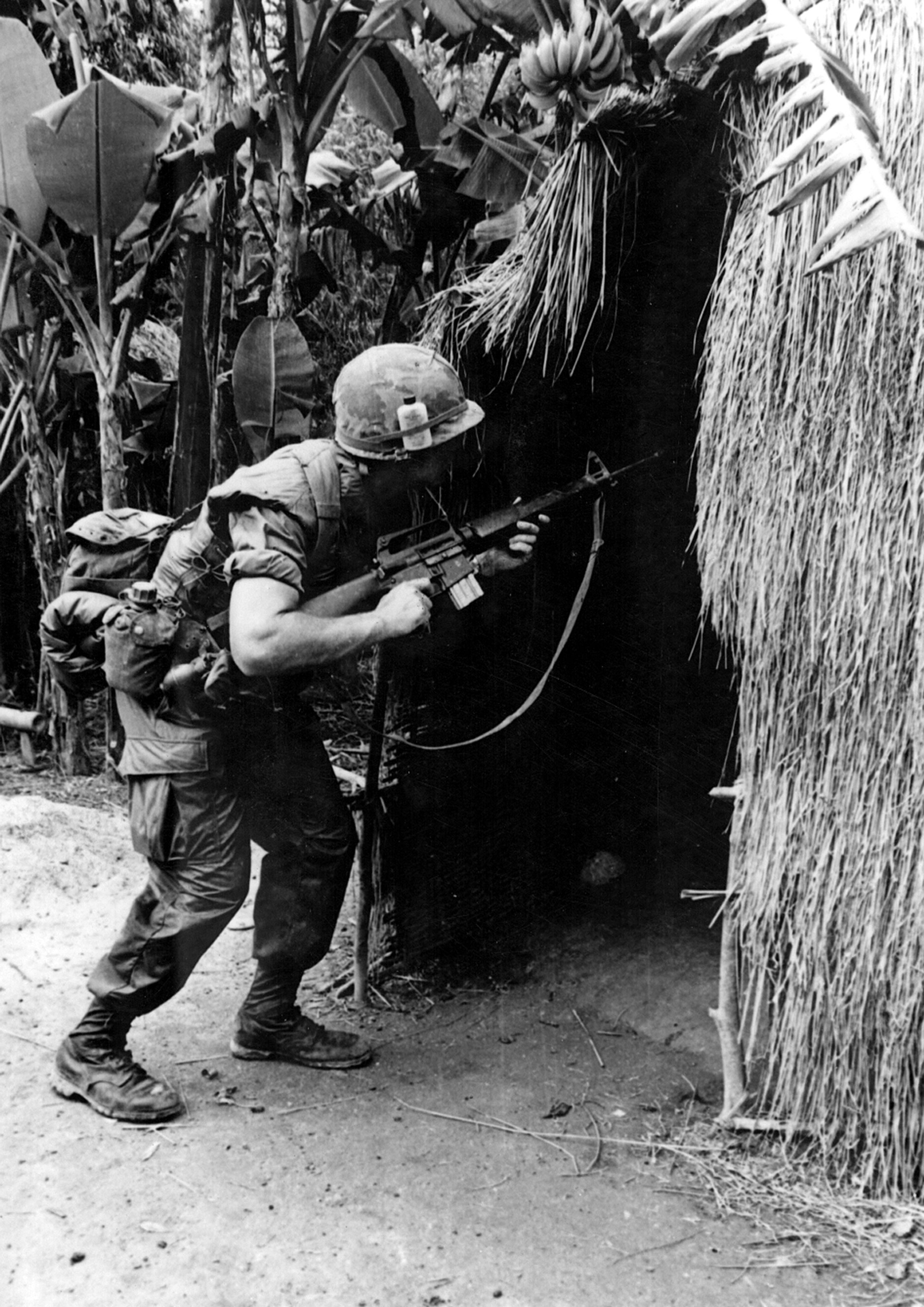
“A soldier barks into a Vietnamese home, forcing the people out.” My Lai Massacre Museum
“I saw three American soldiers point guns and shoot into the shelter and then throw grenades into it and hit my grandmother.”
-Vo Thi Lien, Vietnamese survivor and witness, then 11 years old.
Children, pregnant women, and the elderly were mercilessly killed.
"There were two small children, a very young boy and a smaller boy, maybe 4 or 5 years old. A guy with an M16 fired at them, at the first boy, and the older boy fell over to protect the smaller boy. The GI fired some more shots with a tracer and the tip somehow seemed to be still burning the boy's flesh. Then they fired six more shots and just let them lie.”
-Ronald Haeberle, interview with Plain Dealer reporter Joseph Eszterhas, November 1969
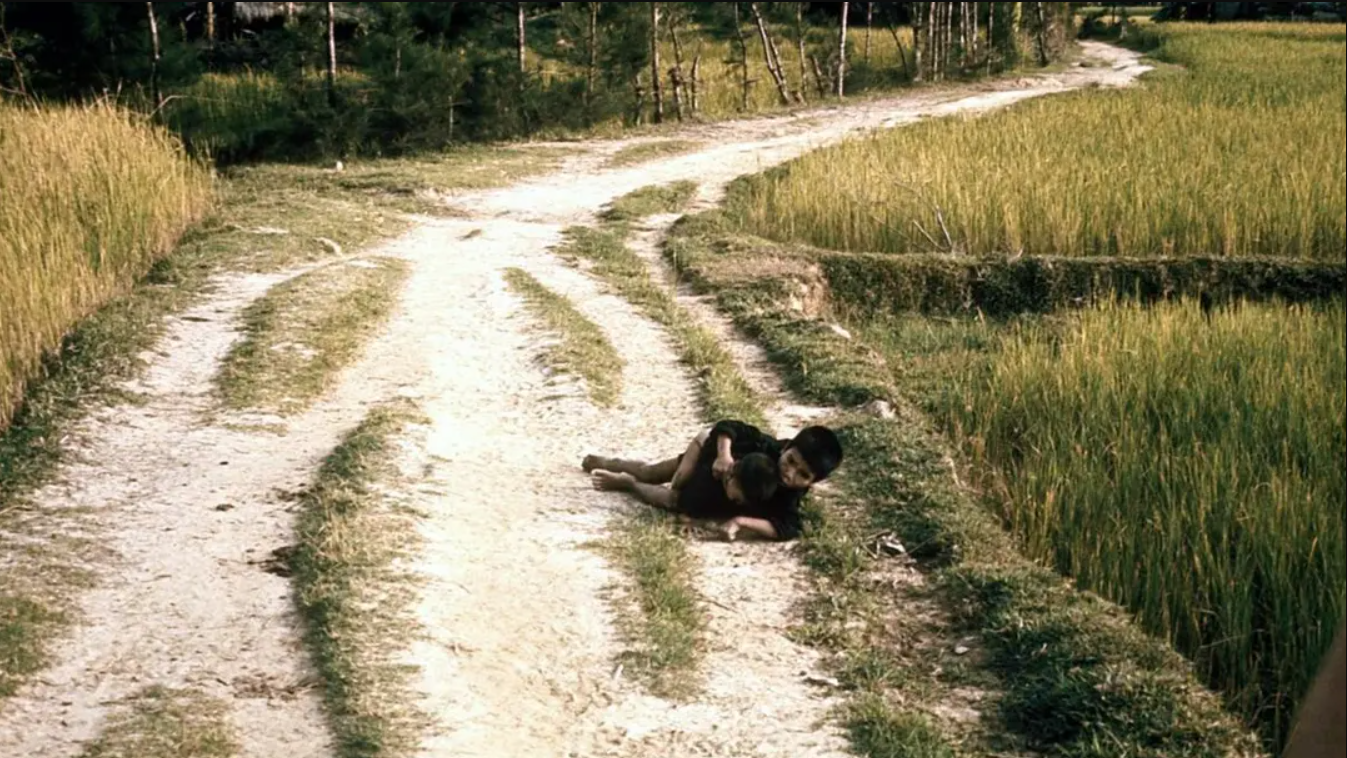
“Two Vietnamese children lie on the ground as they're about to be shot. Son My, South Vietnam. March 16, 1968.” Ronald S. Haeberle / The LIFE Images Collection / Getty Images
“I lay there, horrified. Blood from the nearby bodies splashed onto my body. People who were covered with a lot of blood and stayed still got the chance to survive, while kids did not. Many of them died as they cried for their parents in terror.”
-Nguyen Hong Man, Vietnamese survivor and resident of My Lai who was 13 at the time of the massacre
“These were infants, two- three-, four-, five-year-olds, women, very old men, no draft-age people whatsoever.”
-Helicopter Pilot Warrant Hugh Thompson at a My Lai conference at Tulane University in 1994
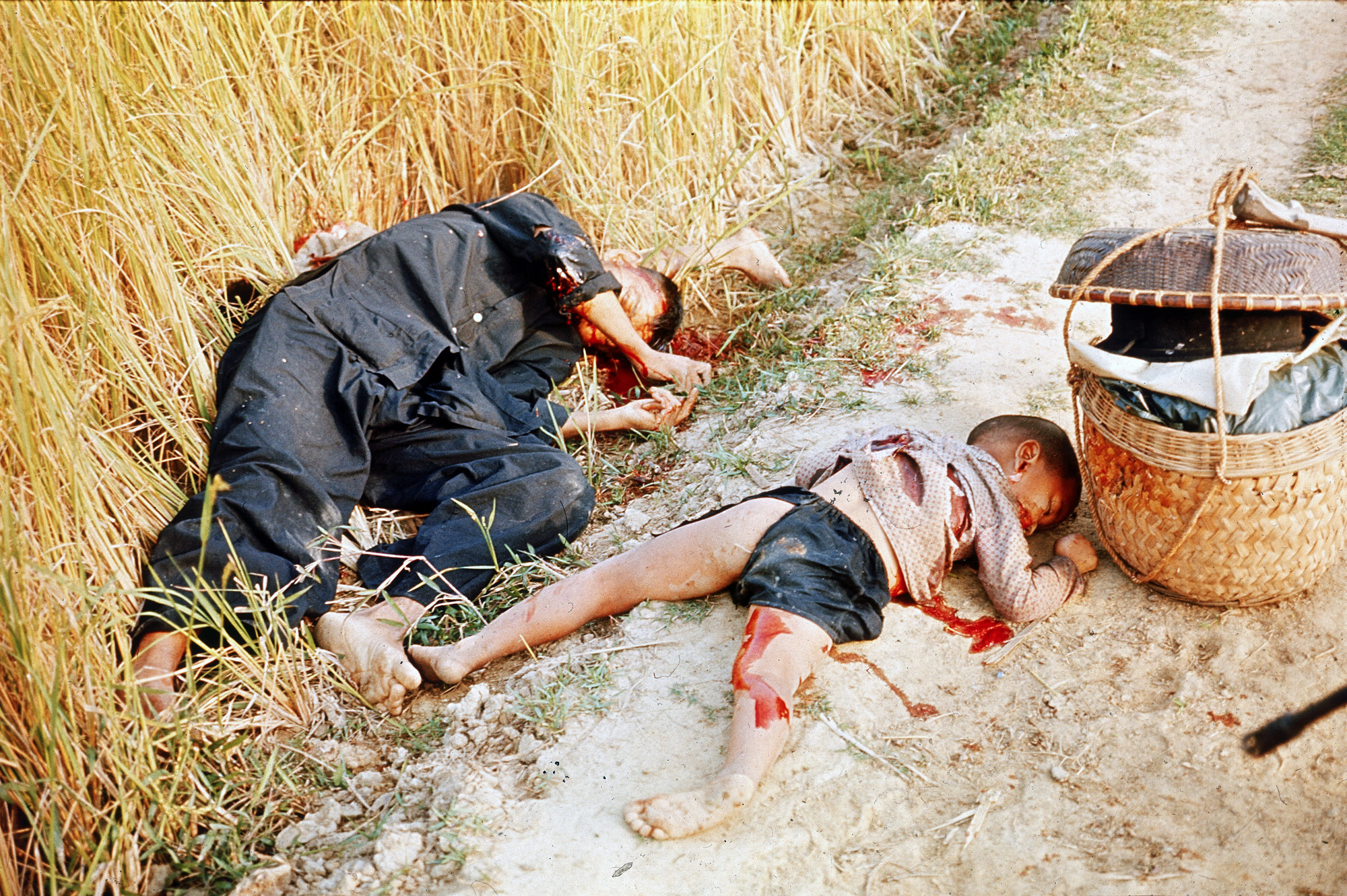
"Haeberle photographed the bodies of this man and boy on the road back towards the village." Ronald Haeberle / Getty Images
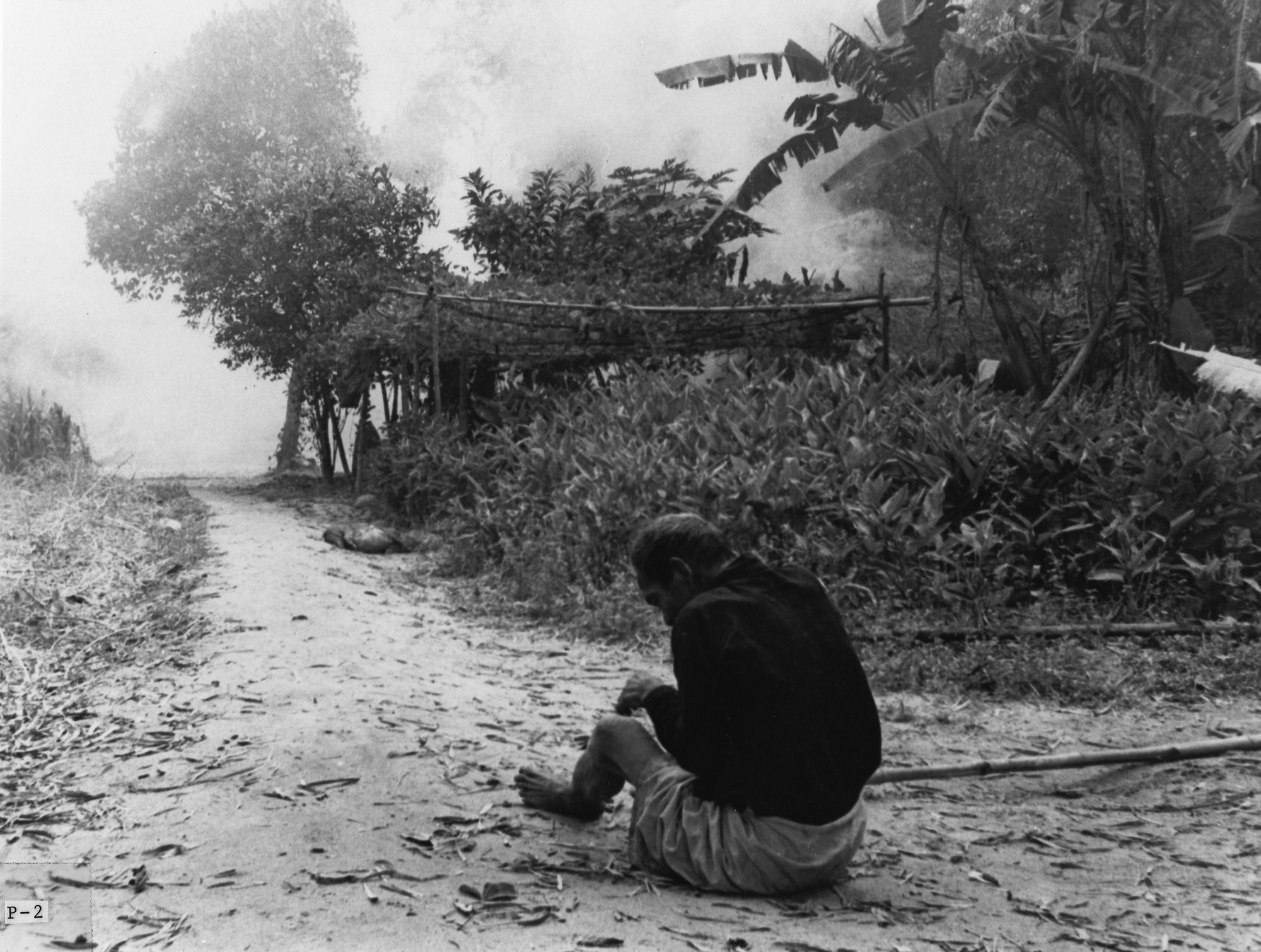
“An older man sitting on the ground.” National Archives
“Just outside the village, there was this big pile of bodies. This really tiny little kid—he only had a shirt on, nothing else—he came over to the pile and held the hand of one of the dead. One of the GIs behind me dropped into a kneeling position, 30 meters from this kid, and killed him with a single shot.”
-Army Field Reporter Jay Roberts
“Off to the left, a group of people - women, children, and babies - were standing around. The machine gunner was standing in front of them with the ammo bearer and all of a sudden I heard this fire and here the machine gunner had opened up on all these people in the big circle, and they were trying to run.
-Ronald Haeberle, interview with Plain Dealer reporter Joseph Eszterhas, November 1969
Countless women were brutally raped and assaulted.
"When the Americans came to my house my mother came out of house, and the Americans then raped my mother and they shot her..."
-Nguyen Hieu, My Lai resident and Vietnamese survivor of the massacre
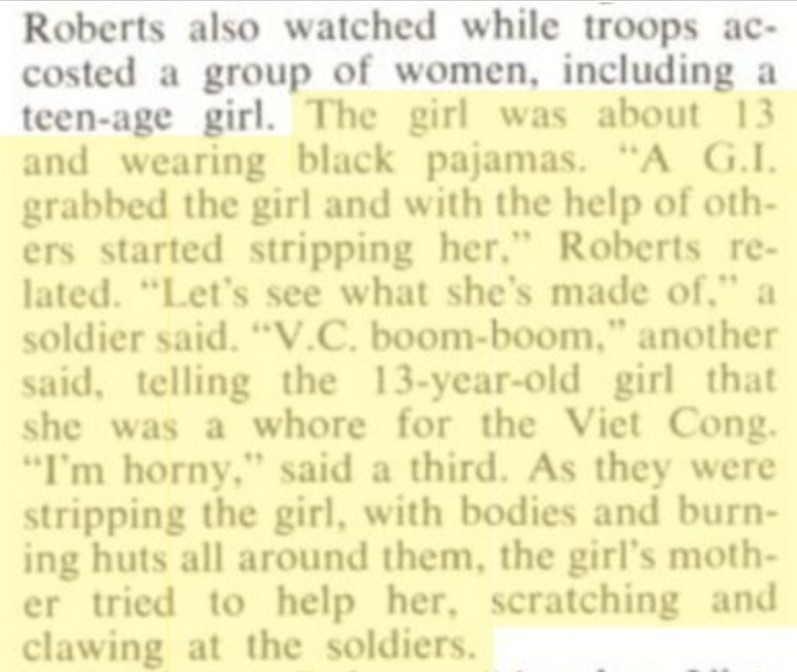
TIME Magazine, Dec 5,1969, Vol. 94, No. 23, Pg 26 & 28
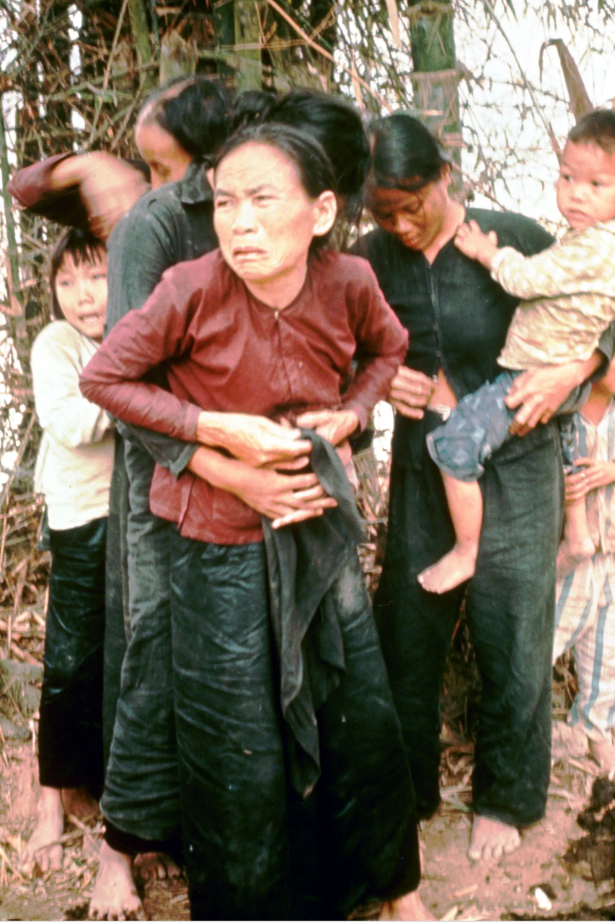
“A group of civilian women and children before being killed by the U.S. Army during the massacre.” Ronald S. Haeberle / The LIFE Images Collection / Getty Images
“Over there was a naked woman who had been raped and a virgin girl with her vagina slit open. We don’t know why they behaved like that.”
-Sa Thi Qui, Vietnamese woman and survivor of the massacre
"Four Hours in MY LAI, Anatomy of a Massacre" Youtube / Yorkshire Television
“I saw Wright, Hutto, Hudson, Rucker, and Mower go into a hut and rape a 17 or 18 year old girl. I watched from the door. When they all got done, they all took their weapons, M-60, M16’s, and caliber .45 pistols and fired into the girl until she was dead. Her face was just blown away and her brains were just everywhere.”
-Private First Class Varnado Simpson, a soldier of Charlie Company's 1st Platoon
The villagers were not only killed; they were brutally tortured.
“We moved into Pinkville and found another stack of bodies in a ditch. It must have been six or seven feet deep. One body, an old man, had a “C” carved on his chest.”
-John Kinch, the pointman for the heavy weapons squad in Alpha Company
“I cut their throats, cut off their hands, cut out their tongue, their hair, scalped them. I did it. A lot of people were doing it, and I just followed. I lost all sense of direction.”
-Varnado Simpson, a soldier of Charlie Company's 1st platoon
Civilians were rounded up and shot into ditches. Soldiers hurled grenades into the piles, killing many instantly.
“They told us to go to the ditch. And then they threw grenades in the ditch and shot into it. I was buried under the bodies of my mother and sisters.”
-Pham Thi Thanh, Vietnamese survivor and witness of the massacre
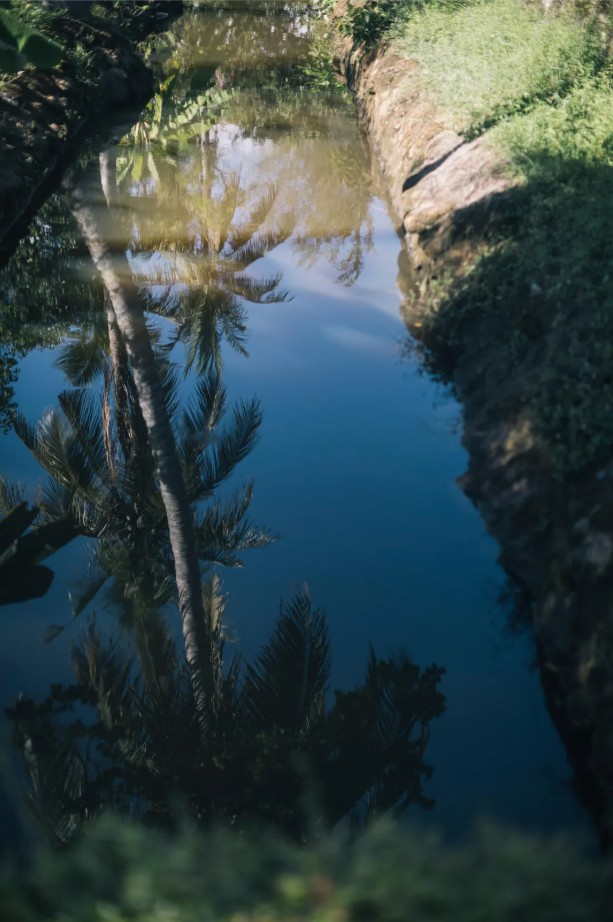
“Palm trees reflected in a ditch where hundreds of Vietnamese villagers died during the massacre.” Aaron Joel Santos
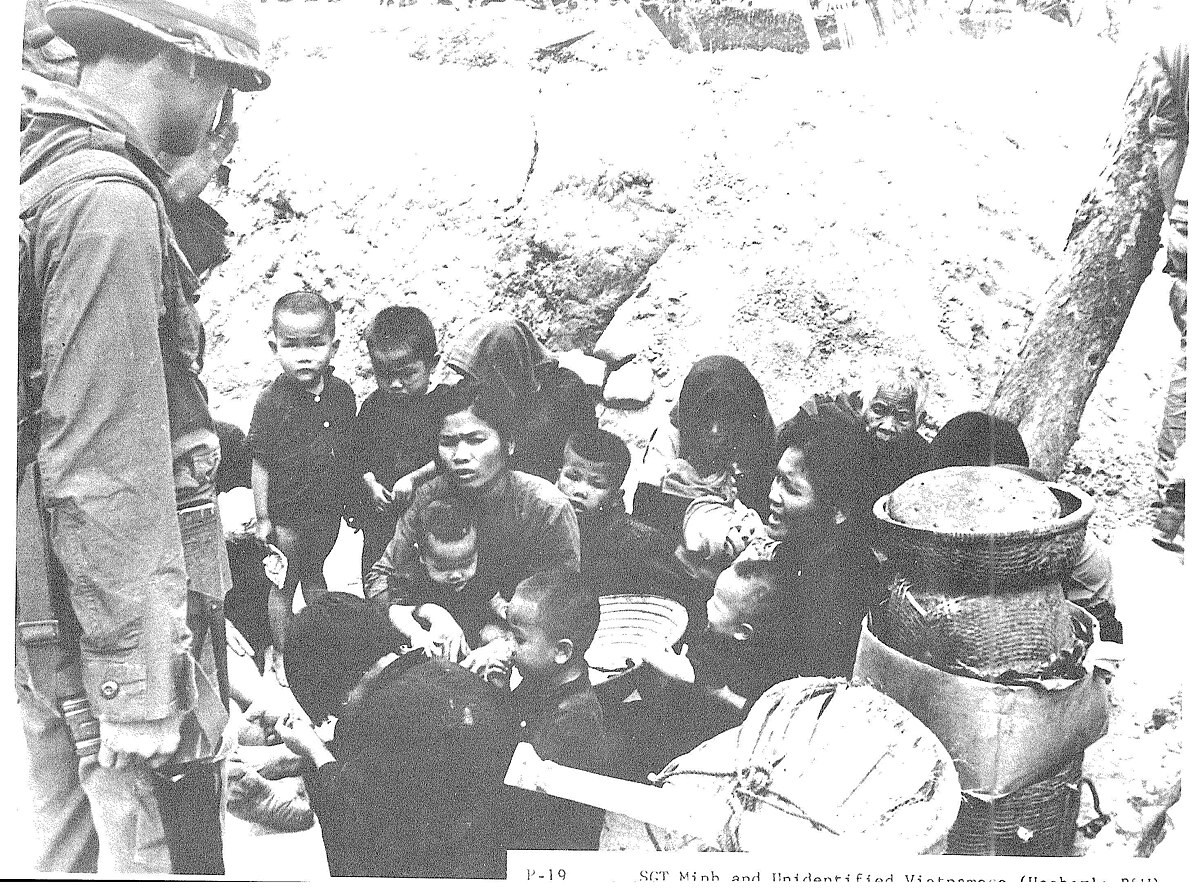
"SGT Minh and Unidentified Vietnamese" Ronald Haeberle / The Peers Commision
“The people were chased into the ditch like ducks, they fell head first. They were crying: ‘Oh God, have pity, please let me up. We’re innocent, have pity!’ They shot all the people dead. Then silence. Tiny children crawling along the edge of the ditch, it broke your heart. I thought I was going to die. I couldn’t breathe…
-Sa Thi Qui, Vietnamese survivor of the My Lai Massacre
The piles of bodies at My Lai became a symbol of the massacre’s uniquely brutal nature. Indiscriminate killings and torture that stood apart from other atrocities committed during the Vietnam War.
“Men, women, children, babies. And we all huddled them up. We made them squat down, and Lieutenant Calley came over and said, ‘You know what to do with them, don’t you?’ And I said yes. And he left, and came back about 10-15 minutes later, and said ‘how come you ain’t killed them yet?’ And I told him that I didn’t think you wanted us to kill them, that you just wanted us to guard them. He said, ‘no, I want them dead.’ He stepped back about 10, 15 feet, and he started shooting them. And he told me to start shooting, So I started shooting, I poured about four clips into the group.”
-Private First Class Paul Meadlo, soldier in Charlie Company's 1st Platoon, in an interview with LIFE Magazine
11:30 AM → Charlie Company breaks for lunch. The village was in ruins.
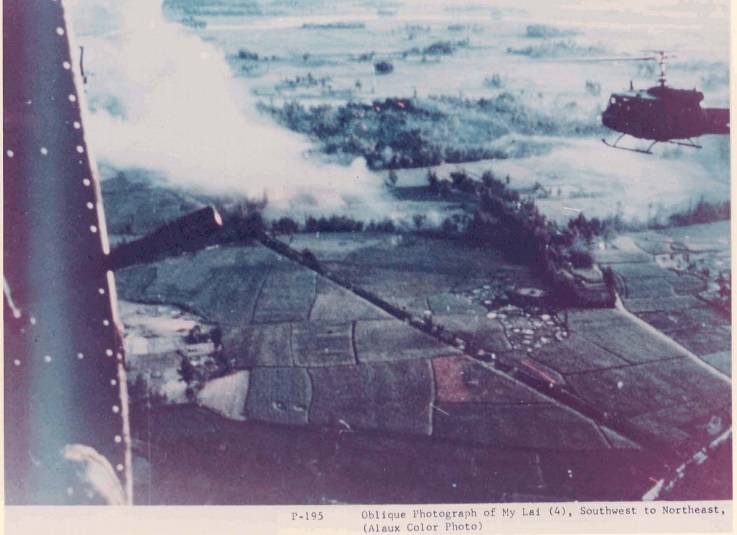
“My Lai burning, as seen from overhead in a military helicopter. Son My, South Vietnam. March 16, 1968.” Library of Congress
“When I noticed that it was quiet, I pushed the dead bodies above me aside. Blood was all over my head, my clothes. I told him [her son] not to cry or they would come to kill us.”
-Truong Thi Le, who was hiding in her home with her 6-year-old son and 17-year-old daughter
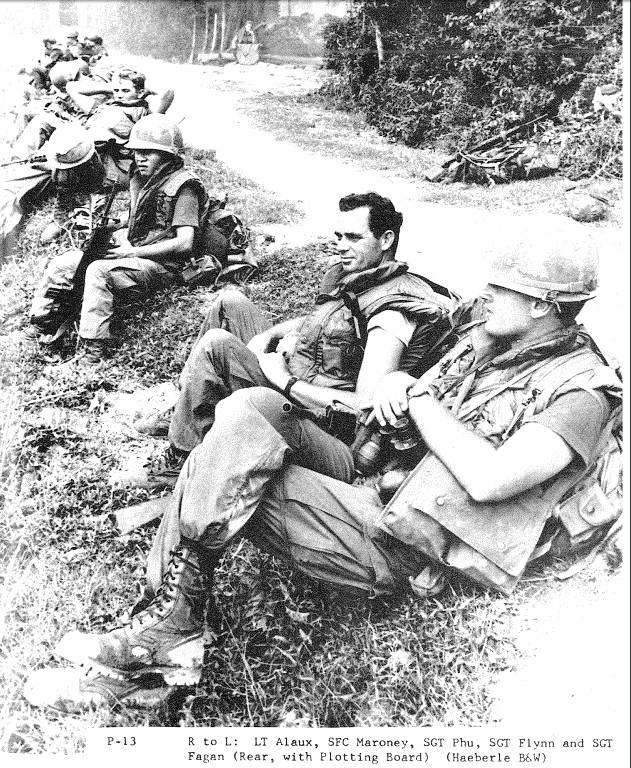
“U.S. soldiers relax by the side of the village, just after carrying out the massacre." Library of Congress / Ronald L. Haeberle
“When we went in there, we went in there with a purpose. And deep down we felt what we were doing was right, but after it was over, everyone knew it was wrong, and the damage was already done, it was too late.”
-Fred Widmer, former Radio Operator of Charlie Company
Final Numbers
504 people were reported dead, including 182 women and 173 children.
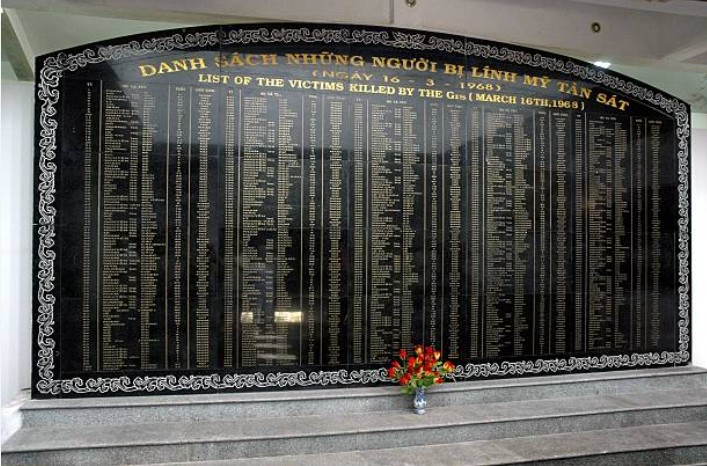
"Vietnam: Memorial with a list of names of the victims of the My Lai massacre." Meißner/ullstein bild via Getty Images
“We were told a hundred and twenty-eight V.C. were killed in the incident. I heard the G-5 say, ‘Ha ha, they were all women and children.’ Somebody else said, ‘Geez, there were only three weapons.’ I think there was a general feeling that this was a bad show, that something should be investigated.”
-Lieutenant Colonel Francis R. Lewis, the division chaplain, after the post-massacre briefing